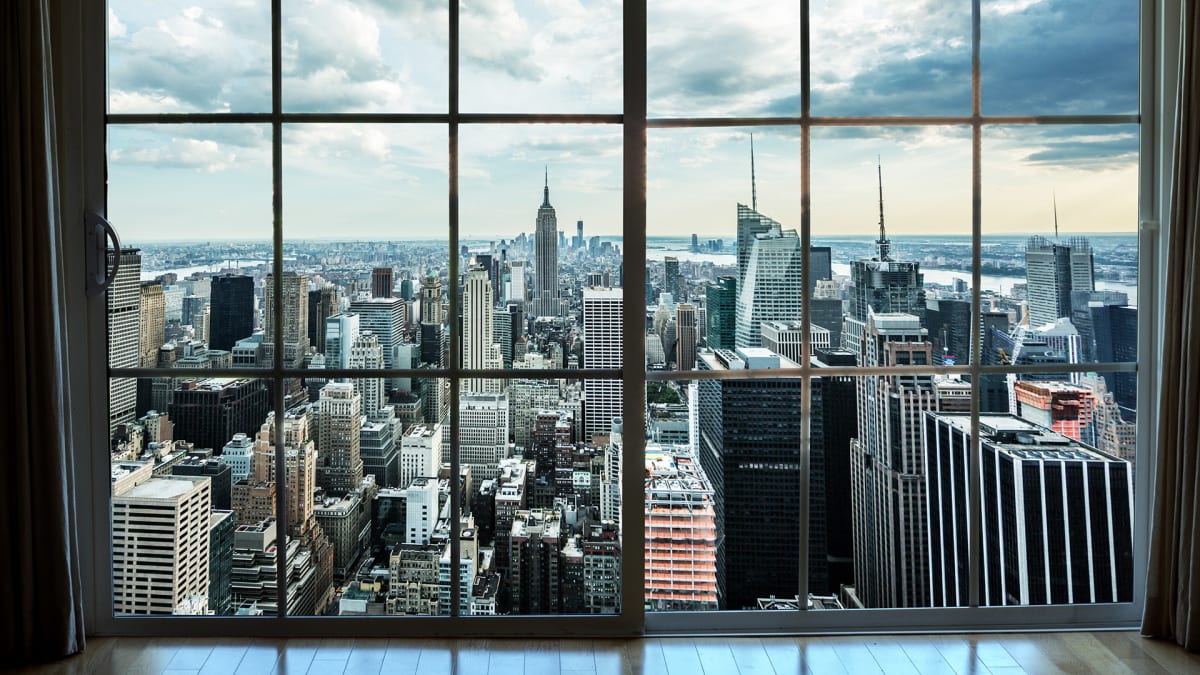
If bragging about how much you're saving since leaving New York is your thing, there is certainly the data. A new report from New York City Comptroller Brad Lander found that, while rent prices rose 12.3% across the country between 2021 and 2022, prices skyrocketed by 19% in New York City.
This comes on top of the fact that, as a major metropolis, New York already has significantly higher rents. While the median rent for a one-bedroom apartment is just above $1,769 nationwide, that number is at $2,106 in New York City.
In Manhattan, that number can easily surpass $4,000.
"The average rent in Manhattan in February 2021 (when I moved into my current apartment) was $2,804," Bloomberg's Erin Lowry, who first drew attention to the situation, writes. "As of August, the average rent in Manhattan was $3,998, based on Zillow (ZG) rental index data. It's not uncommon to hear about people’s landlords asking for $700 to $1,200 more per month at a lease renewal."

Shutterstock
New York's Problem Is Actually Happening Everywhere
These types of statistics are often thrown around by those who don't like or were forced to leave the city, but rent has been skyrocketing in most major urban centers for years now.
The city with the steepest increases is actually, according to a recent analysis by Realtor.com, Miami--rents in the city soared by more than 37% between 2021 and 2022. In another Florida city, Orlando, rent prices rose by 23.9% year-over-year in June.
A popular destination for California transplants and others looking for pandemic-related changes of scenery, Austin recently took the third spot in the country where rent prices are rising the fastest.
An average $1,826 rent is more than 20% higher than it was a year ago.
A lot of these prices come down to supply and demand that is exacerbated at particularly popular cities with a dearth of available housing.
Cities like Austin and Phoenix are also in the midst of a new wave of popularity while New York and San Francisco have been seeing large numbers of people who left during the pandemic try to come back to the city.
Rent Where You Want to Live? Or Buy Where It's Going to Grow?
"Lower vacancies naturally lead to higher rents, because landlords know tenants are having trouble finding their next place to rent," Zillow Senior Economist Jeff Tucker recently told The Atlantic. "When every seat in the game of musical chairs is taken, landlords don't feel much competitive pressure to lower rents."
Most renters in large urban centers will eventually face the question of whether the high rent is worth the lifestyle offered by these cities--$4,000 in monthly New York rent is, multiplied by 12 months, almost a third of the $149,900 median home price in Ohio's Youngstown.
Low prices will not sway someone who needs to be in New York for work or craves its life and atmosphere, but, for others, moving away to an up-and-coming city can offer a real estate market entry point that will build equity and give more flexibility to buy somewhere else in a few years.
Two hours outside both NYC and Philadelphia, Pennsylvania's Scranton saw its home prices grow by 20% year-over-year while the median is still a below-national-average $225,000.
"So much of this analysis comes down to the size of a home that you want or need and the location," writes Lowry. "Getting into a neighborhood on the precipice of being the next hot area is where the returns can truly soar."







